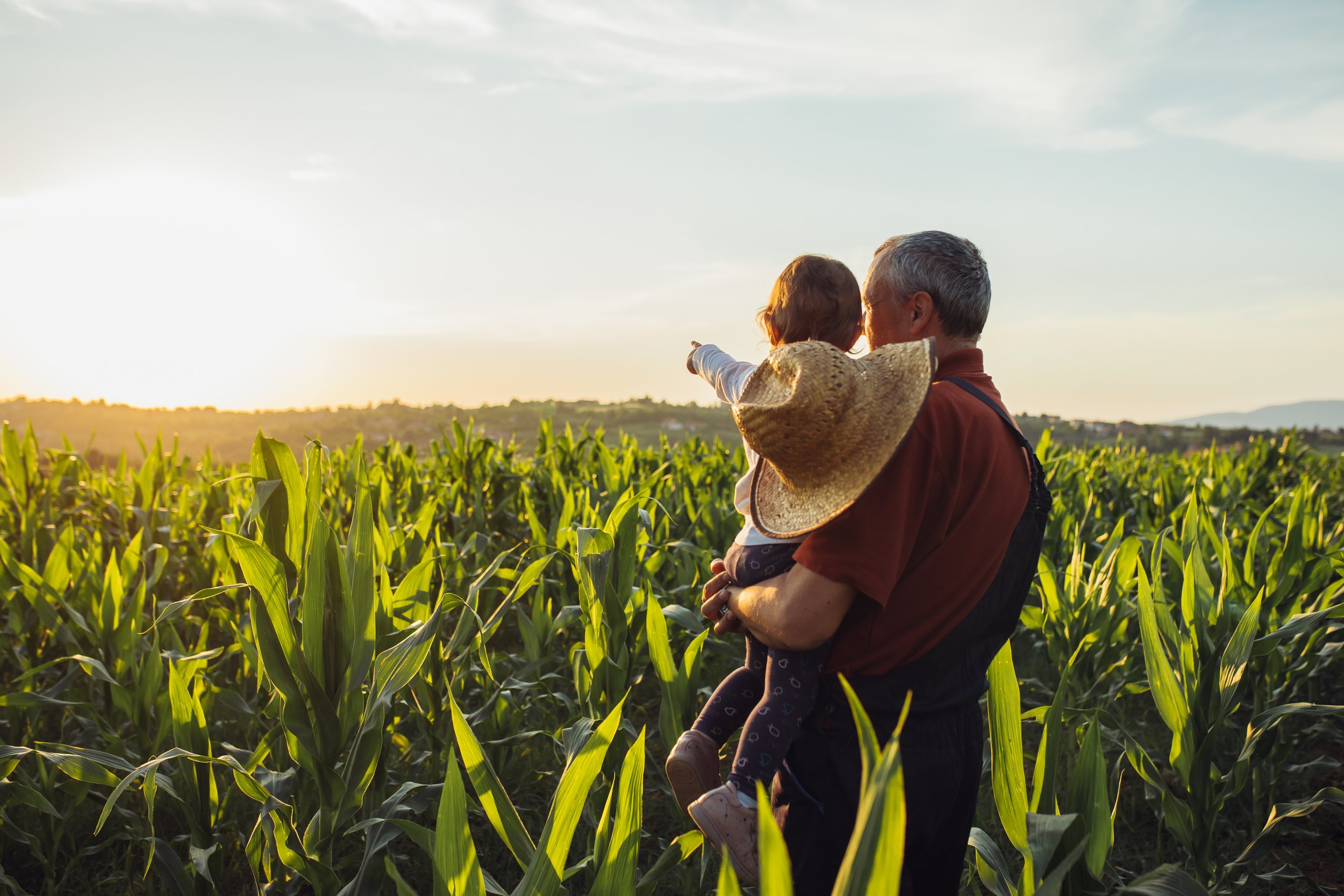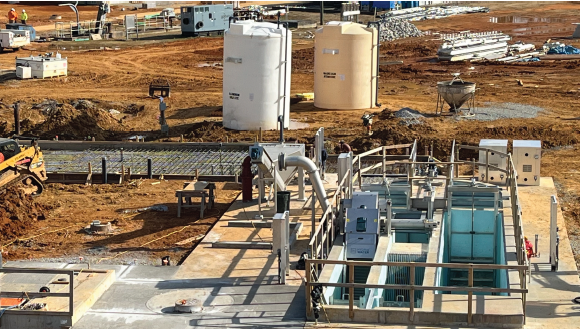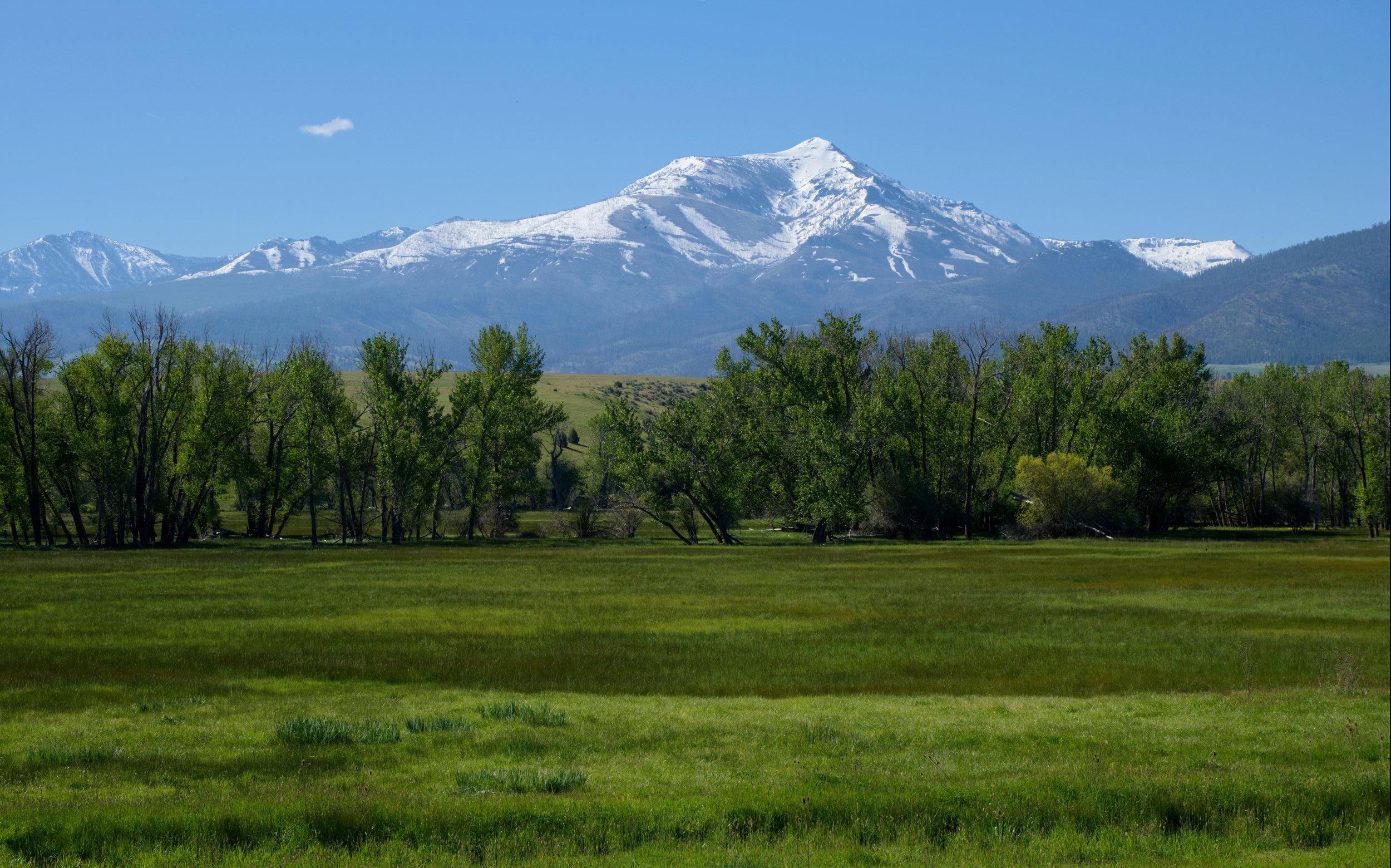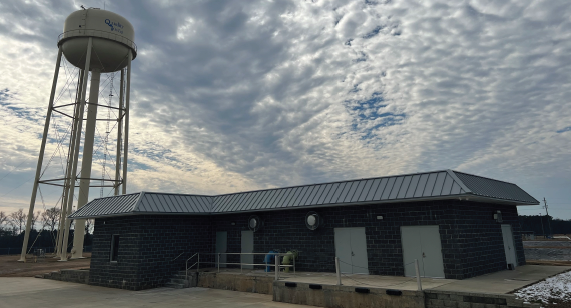
USDA RURAL DEVELOPMENT WATER PROGRAMS’
IMPACT IN ACTION
Frankton and Eaton, Indiana
Like many rural communities across the United States, the towns of Frankton and Eaton, Indiana have relied on USDA Rural Development for infrastructure upgrades. Watch the video to learn more about how these vital programs saved these rural communities.
LaFayette, Alabama
The City of Lafayette is a small city serving around 3,300 customers. The infrastructure there is old, and these grants are needed to help the city supply potable water to the customers. These grants help! In March 2023, we had severe flooding at our City Lake, which washed out the road and the main pipe to the water plant. Alabama Rural Water Association, along with USDA and emergency services, all stepped in and helped get the funds to repair the damage and get water back to the City as soon as possible. It was devastating to a small city, and without the help of Rural Water and USDA, it could have been much worse. I will be forever grateful for all the help I received from Rural Water, USDA, and all the others involved. The City of Lafayette has received several USDA grants in the past, involving old pipe replacement in the distribution system, new intake screens, and new piping at the city lake and pump house that supplies water to the City of Lafayette Water plant.
Ann Gleaton, City of Lafayette
Lowcountry Regional Water System, South Carolina
“As challenging as times are today, small towns and rural areas depend on the USDA RD program more than ever. It serves as its only lifeline for affordable funding to provide safe reliable water and sewer services to the many people living in small town America.”
-Brian Burgess, LRWA General Manager
Brunson, Gifford, Hampton, Varnville and Yemassee, South Carolina
In the heart of the Lowcountry of South Carolina in Hampton County, the towns of Brunson, Gifford, Hampton, Varnville, and Yemassee created a new joint regional water and sewer system. The system was created in 2012 and began operations in 2013. The system was named the Lowcountry Regional Water System (LRWS) for the area it served. The formation was based on a need to address the challenges small systems have to remain sustainable and viable. The leadership in the communities, with the full support and guidance of state and federal agencies, realized that by combining their strengths and working together, they could overcome many of the challenges that were facing them. Economies of scale through regionalization of existing system operations not only increased its viability it also produced opportunities for economic growth. The USDA RD program provided guidance with the formation of its new system, its consolidation of the existing water and sewer system's debt and new loan/grant opportunities available to the new system. Since the time of formation, USDA RD has provided over $15 million in loan and grant funds to enable the system to rehabilitate portions of its aging infrastructure, upgrade and modernize its meter reading system, and make improvements that enhance the performance of its system. The creation of LRWS and the system improvements it has made have led to new investments in the county. One of the larger investments for the county was the Agriculture Technology campus, which invested over $300 million and created over 1,000 jobs.
Atoka Municipal Authority, Oklahoma
“We received two 4-million-dollar grants, one each for our water and wastewater plants. Each has been vital in updating and replacing equipment, etc.., that was worn out and requiring constant maintenance and repairs. There just isn’t any way we could have done these upgrades without USDA native set-aside grants. We are a very poor community without other resources to accomplish these tasks and without putting more burden on our struggling community by raising their costs of receiving clean water and removing their waste through our system! Simply put, thank God USDA was here to help us then, and we desperately need them moving forward to replace all of our outdated water and sewer lines, lift stations, additional water storage towers, and the list goes on! USDA Rural Development is vital to rural America’s future!”
-Danny Delay, Atoka Municipal Authority
Mni Wasté Water System, South Dakota
Being located in a very rural area brings many challenges for a water company. The challenges are amplified when the area is also one of the most economically disadvantaged areas of the country.
The Mni Wasté Water Company is a tribally chartered entity with the Cheyenne River Sioux Tribe serving 14,000 members in the Dewey, Meade, and Perkins counties on the Cheyenne River Lakota Reservation in western South Dakota. The company currently processes an average of one million gallons of water per day, with peak demand near two million gallons daily. But Director Leo ‘Earp’ Fischer said Mni Wasté is capable of processing more than four-point-four-million gallons per day.
This increased capacity and ongoing updates have been made possible through the help of USDA Rural Development. Fischer said that Rural Development’s nearly $90 million investment in the Eagle Butte area through the Water and Environmental Program was vital to Mni Wastés success.
Mni Wasté continues to update existing pipe and extend to new areas to deliver quality water to residents and businesses across the region. The system maintains 5.5 gallons of water in storage capacity and over four million gallons throughout service lines. The company manages more than 1,600 miles of pipe, delivering water to more than 1,600 customers across the reservation, with plans to extend from Highway 63 North to serve the town of Timber Lake. Future plans include upsizing lines to the west along Highway 212, and eventually providing bulk water to Perkins County Rural Water.
Fischer said Rural Development’s programs have only improved over time, making them even more valuable to rural communities.
Newport, North Carolina
"I am a 39-year employee of a non-profit serving Western Carteret County. Our system, West Carteret Water Corporation, was initially completed through a $5.4M loan from USDA Rural Development, known then as Farmers Home Administration. The system was placed online in 1991 to serve a population of 2,808 and now serves a population in excess of 19,500, following 13 loans from USDA Rural Development. Without USDA Rural Development, we would not exist to serve safe, potable water to the rural and small towns that we now serve.
Currently, West Carteret Water Corporation's Board has authorized our engineer to begin Phase 6 of an expansion to our system that would include additional pumping capacity, expanded facilities, and the completion of rural water lines in the few locations that remain. With a 40-year loan requirement, USDA Rural Development helps to provide water service at a reasonable cost to the communities that we service. This agency has been essential to these same communities.”
-Lisa Smith-Perri, West Carteret Water Corporation
Osawatomie, Kansas
The city of Osawatomie, Kansas, is currently in the design phase of a $38 Million total infrastructure improvement project that includes construction of a new water treatment plant. Osawatomie’s current treatment plant is unable to meet modern Surface Water Treatment Rule and Disinfection Byproduct Rule requirements. The water plant serves Osawatomie’s 4,255 citizens and the Osawatomie State Hospital, plus the Miami County Rural Water Districts No. 1 and No. 2.
The current water plant was built in 1939, some components are original. The plant has not had major upgrades since 1968. There is no automation, so every valve turn and chemical dosing adjustment must be made by hand.
The plant was not designed with the Stage 2 Disinfection Byproduct Rule (DPB) in mind, so compliance has been a challenge. The new $19 million plant design addresses DBP formation and cryptosporidium removal, which the city detected in its source water and must meet strict turbidity requirements to remove. In addition to water plant improvements, the city is planning $19 million in infrastructure upgrades to its aging distribution system. Parts of the system were constructed over 100 years ago.
The project's preliminary design is 69% complete. The project is currently on hold due to the uncertainty of USDA Rural Development funding, which will pay for 55% of the project costs; the other 45% will be paid for with grant funds. Rural Development programs are critical to the project; the low-interest loans and extended repayment period are the only tools to make the project affordable for the citizens of Osawatomie, a town with a poverty level of 17.5%, 31% higher than the Kansas average of 12%.
The water infrastructure improvements are crucial to the area's economic development. A new water plant with a larger capacity will serve as an economic development tool because, in addition to its relative proximity to Kansas City, the city owns its electric utility, which some companies find attractive when evaluating locations for their businesses.
Without the Rural Development programs, the Osawatomie water improvements are not affordable, leaving the current plant to limp along and the citizens of the city and rural areas to wait for the old plant to finally fail.
Plymouth Village Water & Sewer District
New Hampshire
“The Plymouth Village Water & Sewer District is a quasi-municipality chartered by the State of New Hampshire legislature in 1893, serving 7,000 customers, including a regional hospital, state university, regional high school, private high school, and ski area. The district currently processes an average of four hundred thousand gallons of water and wastewater per day. It serves as a regional septage receiving facility for over 90 towns throughout northern New Hampshire.
The system improvements over the past six years have provided increased capacity and resiliency and have addressed aging infrastructure; some pipes were over 100 years old and well beyond the end of their useful life. These improvements have been made possible through the help of USDA Rural Development's Water and Environmental Program (WEP). Rural Development’s nearly $19 million investment in the Plymouth Village system was vital to our success.”
-Jason Randall, Director of Operations, Plymouth Village Water & Sewer District
Saluda County Water and Sewer Authority, South Carolina
Saluda County Water and Sewer Authority (SCWSA) was established 30 years ago and serves the unincorporated areas of Saluda County and is home to nearly 20,000 people. Its water and sewer system serves both residential and commercial customers, including two major agricultural companies which depend on SCWSA to maintain high standards of water quality and for their production processes regulated by USDA.
With USDA-RD funding, SCWSA is currently building its own wastewater treatment plant, which will support all the local utilities in Saluda County. The 4.0 MGD WWTP will allow its largest commercial customers to grow so they can continue to be competitive nationally. It will also help environmental initiatives. The additional capacity will allow SCWSA to serve failing septic tank systems leaching into Lake Murray, South Carolina’s largest lake, and SCWSA’s WTP raw water source in the future.
RD obligated over $43 million to SCWSA’s WWTP project. With financing secured, SCWSA swiftly initiated sewer agreements with the towns of Saluda and Ridge Spring’s utilities to facilitate a single, regional, and more efficient treatment plant. Following the hydraulic cycle, SCWSA can tangibly improve the quality of the surface water in the Saluda Water Basin.
City of Bloomer
Wisconsin
“We were fortunate to receive funding from USDA Rural Development to replace $30 million worth of infrastructure. The process was initiated to remove all lead-jointed water mains in our system. It was a 3-year project and a very large task for a community our size. USDA Rural Development was very accommodating throughout the project and worked very well with us, and our engineering firm. I would highly recommend them for your long-term funding.
-Bill Miller, City of Bloomer
Prairie City, Oregon
Prairie City, Oregon, has been plagued with ongoing and severe drought conditions over many years. In 2019 and 2021, the city ran out of water, making basic hygiene, such as flushing a toilet or washing one’s hands, impossible. In March 2020, the pandemic hit, requiring people not to go to work or school, which resulted in a significant increase in water use at home. The additional water usage added more strain and pressure on Prairie City’s domestic water needs and infrastructure. The city was not able to pass the cost of repairs to the citizens because they were already considered low-income. On top of that, many could not work due to the pandemic, which increased the financial strain. Prairie City utilized the Emergency Community Water Assistance (ECWAG) grant through USDA to haul water from neighboring cities to maintain water service to the community.
Laurens County Water and Sewer Commission, South Carolina
In 2007, a severe drought brought attention to vulnerabilities in LCWSC’s water supply. Both the Enoree River and Lake Rabon experienced significant drops in water levels, raising concerns about the long-term sustainability of its water resources.
In response, the board decided to evaluate all available water resources in Laurens County and compare them to its projected water demand over the next 50 years. The findings were alarming, revealing a very high probability that LCWSC’s existing water capacity could be exhausted within that time frame.
The conclusion was clear: without tapping into additional water resources, LCWSC risked running out of water in the future. Recognizing the unpredictability of future droughts and the potential for new industries to move into Laurens County, LCWSC prioritized the development and construction of the Lake Greenwood Water Treatment Facility. The Lake Greenwood Water Treatment Facility and Raw Water Intake is one of the largest and most important capital projects ever undertaken in Laurens County. The project would not have been possible without crucial funding from USDA Rural Development (USDA RD). The rates and terms offered by USDA RD are not available from other lenders for projects of this nature. This funding not only secured a long-term, sustainable water source for Laurens County but also enabled the LCWSC to maintain control over costs. As a result, LCWSC can offer more stable rates to its customers, provide sufficient water to support community growth and ensure consistent water quality across its service area.
Trico Water Company l Dillon, South Carolina
Trico Water Company needed a new water treatment facility to serve its community.With the help of Rural Development, Trico Water was able to install a new water treatment facility at an affordable rate to its users. This new facility allowed Trico Water to increase their overall water capacity while distributing water to their residents on the far side of the county lines. The facility was important in providing new users access to clean affordable drinking water. Not only has the upgrade increased the system capacity, but also relieved nearby treatment plants and wells in lowering their need of production.
“Without affordable funding and grants through USDA Rural Development, these improvements in rural areas would not be possible. The funding that we received has played a vital role in keeping costs down while bringing an increased capacity of potable water to our customers,” said Corbin Arnette, Trico Water Company.
This project completed in April 2024, has not only ensured water availability to its consumers in rural areas, but also increased the possibility for new economic development opportunities. The expansion included a new treatment plant, groundwater well, and SCADA system to go alongside an existing 200,000 gallon water tower.
“Rural Development is irreplaceable when it comes to giving utilities a viable option for infrastructure improvements. Rural America would not be the same without their funding,” Arnette said.
Rural America Deserves Rural Development
Has your system used USDA Rural Development Loans and Grants to make infrastructure improvements? We would love to showcase your story! Submit your impact stories by clicking the button below and help us save these vital programs.












